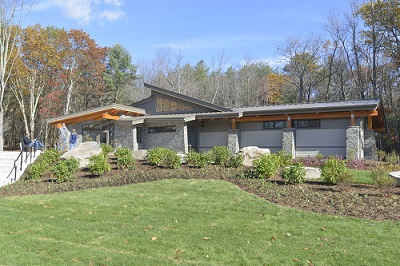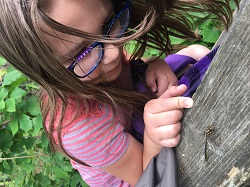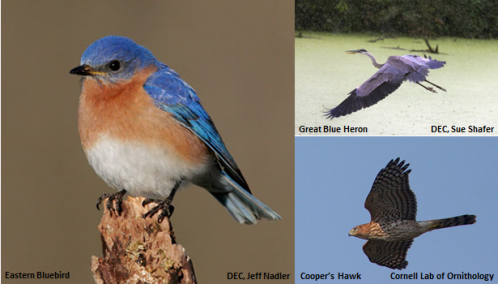Grafton Lakes State Park

Martin Dunham Reservoir Measurements
Following recommendations of the New York State DEC Bureau of Flood Protection and Dam Safety, State Parks has taken a safety measure to reduce risks to homes, schools and businesses in the potential flood zone by opening a valve to relieve pressure on the Martin Dunham Dam. On September 29, 2025, State Parks confirmed the water level to be at 73.5 inches below the spillway crest. The water level may appear lower from shore as the shoreline slope is relatively shallow.
254 Grafton Lakes State Park Way
Grafton, NY 12082

Grafton Lakes State Park, on the forested plateau between the Taconic and Hudson Valleys, includes six ponds and nearly 2500 acres. Long Pond has a large, sandy beach, which is a popular summer attraction. Anglers can go after rainbow and brown trout in Long, Second and Shaver Pond. Pickerel, perch, and bass are abundant in all ponds including Mill Pond and walleye are found at the Martin-Durham Reservoir. All ponds have launch facilities for canoes, sailboats and rowboats, electric boat are allowed. Visitors also picnic, walk the nature trails, and hike, bike or ride horses along the 25 miles of park trails (No ATV use allowed).
In winter, the trails are groomed for snowmobilers, and visitors may also snowshoe, cross-country ski, ice skate or ice fish when conditions permit, call for details.
Interested in volunteering? Grafton Lakes has a robust volunteer program and we are always looking for new faces. We have lots of opportunities from trail work, to education assistants, to gardening, to customer service. Join our community of volunteers today, email graftonlakesvolunteers@parks.ny.gov for more info!
Pavilion Information
Grafton Lakes has six pavilions/tents available. Prices Range from $50 to $100 and can accommodate 40 to 150 people. Check availability at ReserveAmerica.com.
Current Water Quality - Beach Results
Pet Policy: A maximum of two pets are allowed in day use areas unless prohibited by sign or directive. Pets are to be supervised at all times and either be crated or on a leash not more than 6-feet in length. Proof of rabies inoculation shall be produced if requested by staff. Pets are not permitted in playgrounds, buildings, golf courses, boardwalks, pools and spray-grounds or guarded beaches (this does not apply to service animals).
Hours of Operation
CURRENT PARK SCHEDULE & UPDATES
The park is open year-round, 8 am until sunset
Welcome Center/Office: Open Wednesday - Monday from 9am - 4pm (Closed Tuesdays)
- Parking Fee: First Weekend in May - Memorial Day weekend, weekends only - $6 per vehicle;Memorial Day - Labor Day: daily, $8 per vehicle;Day after Labor Day - Columbus Day, weekends only - $6 per vehicle
- Swimming: Swimming is open Memorial Day weekend through Labor Day, daily 10am - 6pmAll camp/school/kids organizations that will be swimming as a group must notify the park ahead of time to be on the swimming group schedule. Groups that show up and do not sign up ahead of time cannot be guaranteed a spot to swim at the beach depending on how full the schedule is. To sign up for the swimming group schedule, please email graftonlakesadmin@parks.ny.gov and include the name of your group & contact information, what day(s) you will be visiting, how many kids/campers in your group, how many adults/chaperones and how many buses (if applicable).WEEKDAY CAMPING/SCHOOL/ORGANIZATION SWIMMING GROUPS
- Day Use/Picnicking/Hiking: Available year-round
- Picnic Shelters: May 1st - Columbus Day. Advance reservations available at reserveamerica.com
- Main Parks Restrooms open daily May through Columbus Day* Restrooms are available year-round in Welcome Center during office hours and a Clevis toilet is available at the end of the main parking lot by the playground during park hours.
- Playgrounds are open until snowfall
- Trails are open, conditions permitting
- Food Concession:
Currently Closed – Operating season is Memorial Day Weekend through Labor Day - Boat Rentals:Currently Closed – Operating season is Memorial Day Weekend through Labor Day
Fees & Rates
Most New York State Parks charge a vehicle use fee to enter the facility. Fees vary by location and season. A list of entry fees and other park use fees is available below. For fees not listed or to verify information, please contact the park directly.
The easy-to-use Empire Pass card is $80- and your key to all-season enjoyment with unlimited day-use entry at most facilities operated by State Parks and the State Dept. of Environmental Conservation including forests, beaches, trails and more. Purchase online or contact your favorite park for more information. Learn more about our Admission Programs including the Empire Pass.
- Vehicle Entrance Fee
- Parking Fee:First weekend in May - Memorial Day weekend: weekends only - $6 per vehicle;Memorial Day weekend - Labor Day: daily, $8 per vehicle;Day after Labor Day - Columbus Day: weekends only - $6 per vehicleNo Vehicle Entrance Fee refunds, including due to inclement weatherBus fees (same whenever booth is open for charging): $35.00 per bus
- Snowshoe/Kicksled Rental
- Snowshoes $5 per dayKicksleds, free to borrow. Patrons must provide contact information and form of ID.
- Pavilion/Tent
- Pavilion/tent rentals are open from the beginning of May to Columbus Day for day use. Go to ReserveAmerica.com to book a location. There is no camping or overnights sites.
Maps

New! Download this park's digital map to your iOS Apple and Android device.
Highlights of Grafton Lakes State Park:
• Grafton Lakes State Park comprises nearly 2500 acres of land within the surrounding landscape of the Rensselaer Plateau, whose extensive forests are home to black bear, river otter, and even moose. Located only 20 minutes from Troy, New York, the park provides excellent wildlife watching opportunities for outdoor enthusiasts. Look for tracks and animal signs along the trails, or better yet come snowshoeing in winter with the Park Naturalist for a guided tour of who's been active in the woods.
• Shaver Pond is an example of an "oligotrophic" lake, low in nutrient levels with clean, clear oxygen-rich water. When you take a paddle, you may think the lake bottom is just a few feet down, but dip your paddle in some spots and you'll discover just how crystal clear the lake truly is!
• The rocks in the forests in Grafton, once called Roxborough, have had a big impact on its cultural history. They are largely Rensselaer Greywacke, a type of sandstone that is very slow to degrade into poorly drained acidic soil. Imagine the perils of plowing this landscape for early settlers, and the many hours of back-breaking labor that would have gone into it. Grafton's rocks and soils did not encourage farming, and by the late 1800s the farm fields and pastures had begun to return to the forest, just 100 years after the area was first inhabited by early American settlers. Look along the trails for old stone walls from this bygone era.
• Located off the Fire Tower Trail, the Dickinson Hill Fire Tower gives views of Massachusetts Berkshire Mountains, Vermont's Green Mountains, and the Adirondacks. The Friends of Grafton Lakes State Park restored this fire tower in recent years, so climb its eighty steps to enjoy the spectacular view.
• Beavers have been active in the park since the 1930's, when their numbers began to increase thanks to conservation efforts. They are responsible for many of the open wetlands in the park, and you will see signs of them along the shores of every pond in the park. They play a powerful role as engineers of the natural environment through the construction of dams. The dams help raise water levels to protect their lodges, and in turn provide more wetland habitat for other wildlife.
What will you see? Plan your visit today!
Look and Listen for these birds at our Park:
The many types of bird species in Grafton Lakes State Park, along with the surrounding forest lands of the Rensselaer Forest Tract resulted in the area being named an Important Bird Area by Audubon.
Everyone is a Steward: Be a Grafton Lakes State Park Hero!
- Know the rules and concerns for the area you'll be visiting.
- Leave rocks, plants and other natural objects as you find them.
- Let nature's sounds prevail. Avoid loud voices and noises.
- Respect other visitors and protect the quality of their experience. Be courteous. Yield to other users on the trail.
- Observe wildlife from a distance. Do not follow or approach them. Never feed animals. Feeding wildlife damages their health, alters natural behaviors, and exposes them to predators and other dangers.
- Use extra caution when using headphones. You may not be able to hear warnings.
- Don't litter.
For more information, please read our Trail Tips!
Ask a Naturalist!
Q: What kinds of fish are found in Grafton Lakes State Park?
A: I hear this question nearly as often as some little person asks me if Grafton has sharks in the water! No sharks, but plenty of fish. Grafton has many members of the sunfish family, including small and large mouth bass, pumpkinseeds, blue gill, and rock bass. The sleek chain pickerel, the "whiskered" brown bullhead, yellow perch, and varieties of trout also live in the park's ponds. Want to see for yourself? We offer free fishing clinics for young people on request, and also host a fishing clinic annually on the last weekend of June as part of Free Fishing Weekend, when no license is required.
Q: "Who made that?"
A: This is one of the questions I receive most from all sorts of people in response to all sorts of mysteries. It may come up when we're looking at a pile of a pine cone remains under a spruce tree, or a pair of round tracks with five toes and claws digging into the snow. Or perhaps even after a bird makes a sudden alarm call from the tree tops. The best part is the excitement that comes from figuring the answer out together! We have our detective skills, binoculars, field guides, and lots of other tools to help us track down answers to the wild's fascinating mysteries.
Q: Where should you take a hike with your family when visiting Grafton Lakes State Park?
A: One of the popular trail loops is the Shaver Pond Trail. Less than 2 miles in length, it brings you past wetlands, hemlock and maples, lakeshore and vistas, and is very doable for young hikers. In winter, you'll see signs of mink and deer aplenty, while in spring there is a chorus of little frogs, called Spring peepers, serenading all passersby. If you want some big views, take the hike up the Fire Tower Trail, which is 3 miles round trip. Along the way, there are some wet spots great for spotting animal tracks and some very busy beaver activity. Make sure to pick up a trail map at the park office before you head out!
Did You Know?
- DID YOU KNOW? Many of the exposed rocks you see in Grafton Lakes State Park were formed a mile down deep in the ocean below an ancient arc of volcanic islands, over 500 million years ago. Today they are sitting atop a Plateau at 1600 feet! A lot can change in 500 million years!
- LISTEN UP! Literally... you may hear the call of a Broad-Winged Hawk when you are hiking the trails at Grafton Lakes State Park. They are easier to hear above your head than to see in their forest home.
- DID YOU KNOW? Fast-flying Dragonflies start out their lives swimming in the water, as nymphs. While they lack wings during this stage, they are still fearsome predators of other aquatic creatures, even tadpoles.

Environmental Educators
518-279-1155 or graftonlakessp@parks.ny.gov
Programs Offered in Fall and Spring:
Busy Beaver:
Nature explorers will find beaver on all six lakes at Grafton Lakes State Park. How are beaver like us and how are they different from us? What is happening inside of a beaver lodge? We'll engage First graders' natural curiosity about wild creatures through this program of discovery. Students will also make a very quiet visit to an active beaver lodge.(ELA W 1.8, NGSS 1-LS1)
Cycles of Nature:
Cycles of nature are all around us! If your students have just learned about them in the classroom, then let us show them actively underway in our beautiful setting. We'll start with the story of the water cycle and weave it into the cycles of some of our local plants and animals through games, a scavenger hunt, and a pond explore. (ELA W.2.3, NGSS 2-ESS2)
"Go Fish" at Grafton lakes!:
The park is known for its lakes and abundant wildlife, but which fish actually live in our underwater world? Come meet them by the pond! In collaboration with the I Fish NY program, the park brings students to Long Pond for this program about our local fish ecology, their life cycles and habitat needs. Kids will design their own fish suited to a pond habitat, play tag as a sunfish, and perhaps catch one off of Long Pond dam! (ELA W 3.8, NGSS 3-LS1, 3-LS2, 3-LS4-2&3)
Geology Trek
What better way to discover the story hidden within the rocks than in person at a park! Rock within Grafton Lakes dates to the Cambrian Era when this part of North America was submerged, below the equator, and off the coast lay a volcanic island arc. The program will cover plate tectonics, types of rocks, and geologic time. (HS-ESS2-1)
We are also available for in-school programs or can fashion a new program around a topic that suits your curriculum in our outdoor classroom. Additional winter snowshoe programs are available for schools with classes of 20 students.
Our programs are interdisciplinary and address both Common Core and Next Generation Science Standard in an outdoor setting. Students will explore, imagine, play and interpret the natural world around them. Programs typically run for about two hours, and the fee is $2-3 per student depending upon resources required. Pre and post-program activities are generally available for all programs. Additional programs can be designed around other topics of interest. For large classes with older students, rotation programs may be designed that give students a multi-disciplinary experience in an outdoor setting for a half day at a rate of $3/student.
State Parks has launched a grant program to provide transportation funding assistance to schools for field trips to State Parks. Learn more about eligibility and how to apply.

Key BCA Criteria:
-Migratory concentration site
-Diverse species concentration site
-Species at risk site
The Grafton Lakes BCA is within Grafton Lakes State Park. The forest community consists primarily of beech-maple mesic, hemlock-northern hardwood, and spruce-northern hardwood forests but also boasts over 70 acres of wetlands as well as over 300 acres of lakes and associated shorelines. Grafton Lakes BCA is a stopover site for Neotropical migratory songbirds especially forest dwelling migrants during both spring and fall migrations. The site supports a diversity of birds associated with upland forest. It is also a significant site for forest breeding raptors such as the state species of special concern Cooper's Hawk (possible breeder) and Red-shouldered Hawk (probable breeder).
Download a copy of the BCA map.
Attention Hunters: Highly Pathogenic Avian Influenza (i.e., "bird flu") has recently been detected in New York State in a variety of waterfowl species. Although the NYS Department of Health (NYSDOH) has stated that avian influenza rarely spreads to humans, the New York State Department of Environmental Conservation (NYSDEC) is encouraging hunters to take extra precautions while processing harvested waterfowl. For more information on best practices for hunters to minimize risk of exposure, please read NYSDEC Highly Pathogenic Avian Influenza - What Hunters Need to Know (leaves State Parks website).
For general information on Avian Influenza, please see: Cornell University, College of Veterinary Medicine - Avian Influenza Fact Sheet (leaves State Parks website).
For additional updates on Avian Influenza, including current updates, see NYSDEC - Animal Diseases (leaves State Parks website) and NYSDOH - Questions and Answers about Avian Influenza (Bird Flu) (leaves State Parks website).
Deer and small game hunting are allowed in season. Park hunting permit dates are September 1st to August 31st to cover the NYS DEC hunting permit dates.
- Complete and sign the hunting permit (PDF provided) – if you are submitting via email the permit must be scanned as a document, no pictures of the permit will be accepted.
- Provide a copy of your current hunting license
- Submit your permit and hunting license to the park office via email (graftonlakesadmin@parks.ny.gov) or mail to P.O. Box 163, Grafton, NY 12082.
Wednesday, October 8, 2025 05:30 PM - 07:30 PM
Grafton Lakes State Park
Friday, October 10, 2025 09:00 AM - 12:00 PM
Grafton Lakes State Park
Saturday, October 11, 2025 01:00 PM - 03:00 PM
Grafton Lakes State Park
Saturday, October 11, 2025 04:00 PM - 06:00 PM
Grafton Lakes State Park
Thursday, October 16, 2025 05:45 PM - 06:45 PM
Grafton Lakes State Park
Amenities Information
- Amenities
- Biking
- Boat Launches
- Boat Rentals
- Equestrian Trails
- Fishing (Accessible)
- Food (Accessible)
- Hiking
- Hunting
- Ice Fishing
- Ice Skating
- Pavilions and Shelter Rentals (Accessible)
- Playgrounds
- Showers
- Snowmobiling
- Snowshoeing/X-Country Skiing
- Swimming Beach (Accessible)
- Documents
- Birding Checklist (pdf)
- Hunting Permit & Guidelines (pdf)
- Drone Permit Application (docx)
- Film/Photography Permit Application (pdf)
- Special Events Permit Application (pdf)
- Tent Construction Approval Form (pdf)
- Grafton Pavilion Rental Packet 2025 (pdf)
- Martin Dunham Dam 6-11-25 Public Meeting Information Boards (pdf)
- Martin Dunham Dam 6-11-25 Public Meeting Presentation (pdf)
- Martin Dunham Reservoir Measurements 8-12-2025 (pdf)
- Martin Dunham Dam Update 7-16-2025 (pdf)
